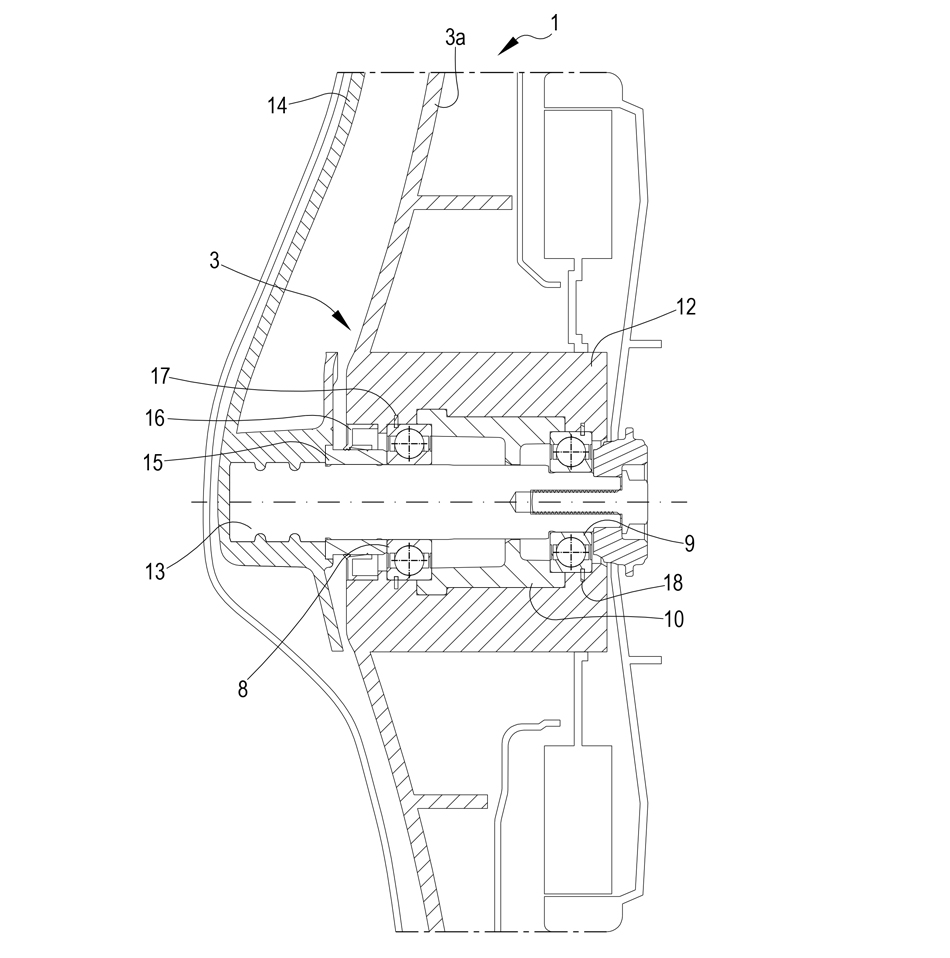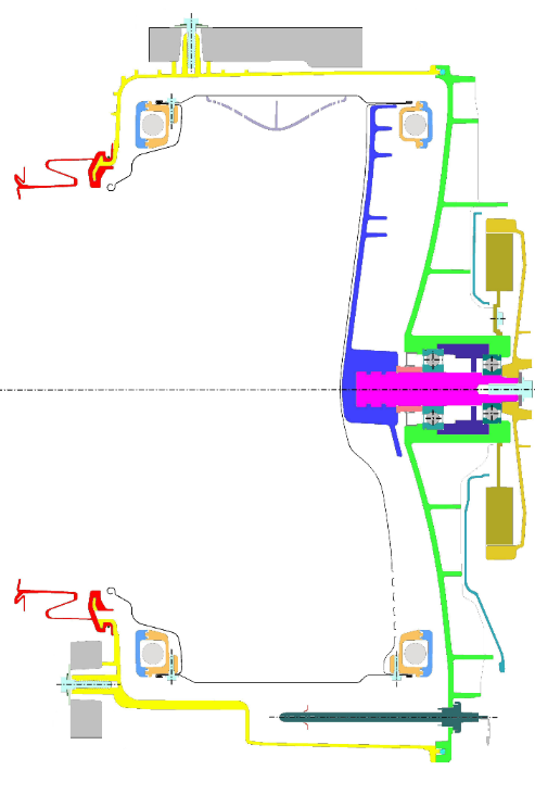Washing machine engineering with co-moulded bearings
We have conceived, designed, prototyped and patented a co-moulded bearing that provides a significant reduction in the production costs for front-loading washing machines.
- Sector: Domestic appliances
- Target: Reduce production costs for front-loading washing machines
- Solution: Co-moulded bearing

The background
All existing solutions do not significantly reduce costs and affect the safety of the machine.
None of the ways we are aware of for reducing the BOM of a front-loading washing machine provides a crucial reduction of costs as well. However, they all affect the stability and safety of the machine in some ways. For example:
- Reducing the thickness of the sheet metal of the cabinet may also lead to a loss of stability of the machine.
- Reducing the thickness of the plastic used to manufacture the tub may result in the bending and deformation of the entire drum cluster.
- Reducing the thickness of the plastics used for trims and decorations, may cause visible dents and deformations.
The idea
Bearings are no longer mounted inside their holder, but are rather co-moulded directly in the tub.
- The cost of the aluminium or cast iron bearing support.
- The manufacturing and machining costs of the bearing support.
- The equipment for mounting the bearing inside the bearing support, which must be executed with perfect precision to prevent noise and vibration.
The challenge
Strength and temperature of the contact interface between the bearing and the plastic of the tub are the two issues that must be addressed.
The first is the mechanical strength of the new cluster. We have therefore carried out a number of simulations to ascertain the maximum permissible operating speed and the maximum permissible unbalanced load.
The second issue concerns the temperature that is created around the contact area between the bearing and the plastic of the tub. Bearings generate heat that is generally dispersed through the aluminium bearing support. In our new configuration, however, the bearing is in direct contact with the plastic and this could result in a softening of the structure over time.
The solution
Sample tests give encouraging results.
We have therefore been able to carry out a testing campaign that provided encouraging results, comparable with the simulations that had been performed.
The patent
In 2019 the innovation proposed by SPM has been the subject of a patent No. 102019000018779 for the co-moulded bearing, whose design had been validated by laboratory tests on the prototype.
The process
- Analysis of patent documentation.
- Preparation of patent and supporting documentation for filing with the relevant authorities.
- Study of layout for the new rear tub solution.
- First structural FEM analysis of the entire tub assembly.
- 3D modelling of the new solution.
- FEM calculations for confirming and comparing to an existing structure.
- Dynamic calculations under the same working conditions (speed and unbalanced mass).
- Versioning of 3D models for the manufacturing of the mould.
The progress
A new tub concept with a novel configuration
We have turned the traditional tub around to reduce manufacturing costs.
In order to support our new bearing solution, however, a more structural material such as a costlier glass fibre reinforced polypropylene must be used.
However, our research team has designed a solution that reduces this cost also. By turning the traditional solution around, we can obtain a new tub cluster formed by a very deep front section, made using simple PP (yellow in the drawing) and therefore cheap to manufacture, joined to a rear section, carrying the new bearing assembly, which is made using a reinforced plastic (green in the drawing). Using our solution, therefore, only the rear section must be made of glass fibre reinforced plastic, with a significant reduction in costs.

Replacement of the cast iron spacer with a plastic shape
The spacer becomes plastic, and can be press-moulded.
The final solution, verified during all evaluations by FEM calculations, involves a durable plastic spacer that can be manufactured with a mould.
